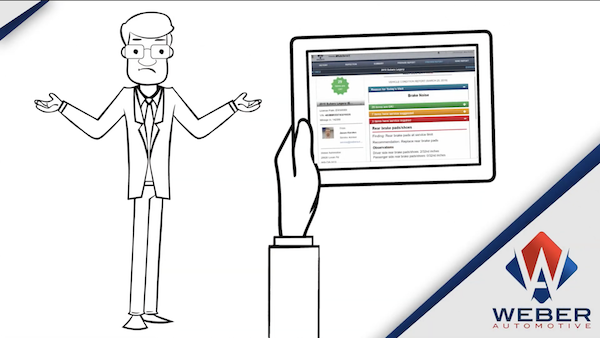Blog - Automotive Professionals
Category: Automotive Professionals
Why Testing and Accurate Diagnosis is Important for your Wallet
The most expensive repair you can make is one that's not needed. How do you prevent this? With proper
Helping The Community
During COVID, we checked in on clients and offered help with errands. At Weber Automotive, supporting our community is always a
Honest & Fair Expert Auto Repair
This has been the tagline at Weber Automotive forever. We love it because it’s catchy, but more importantly because
Loaner Vehicles & Shuttle Service
Weber Automotive offers complimentary loaner cars, shuttle service for seniors, and proudly gives back to our community. Service with care you can
Company Culture At Weber Automotive
Bryan Weber started Weber Automotive in 1995. Since then, we’ve grown and moved into our current location in
Is It Better To Purchase A New Vehicle Or Maintain My Current Vehicle?
As you can see by the photo related to this blog, maintaining a used vehicle will save you thousands over purchasing a new
Tire Repairs & TPMS
We’ve all been the victim of a flat tire at least once in our lifetime. How do you know if a tire can be repaired or if it should be replaced? Repairing Your Tire If a puncture or damage occurs in the center of the tread area, the tire can be repaired. We use a patch plug kit in most tire repairs which is the best method for safe tire repair. However, suppose the damage to your tire is extensive in the sidewall or shoulder of the tire. In that case, it isn’t repairable and needs to be replaced. Using TPMS For Replacing Your Tire You will more than likely need a TPMS repair kit when replacing your tire. This stands for Tire Pressure Monitoring System. In newer vehicles, this feature monitors tire pressure & will alert you on your dashboard if there is an issue that needs to be addressed. Changes in air temperature can cause tire pressure to drop temporarily, which may cause the TPMS sensor to alert you. Typically, you will know if the issue is due to air temperature, as all of your tires will probably be lower than average. Learn More Today Learn more about tire repair and TPMS by visiting our website for more
All-Wheel-Drive VS Four-Wheel-Drive
Learn the difference between all-wheel drive and four-wheel drive, plus the pros and cons of each to help you choose the best for your
Higher Mileage Service Intervals
Cars today can run a lot longer than they used to. In today's blog, we want to touch on service intervals for higher milage cars. The Mileage Portion Cars today are a lot tougher than they used to be. 100,000 miles used to be a major milestone back in the day. However, in today’s world, that’s barely anything to be boasting about. Before, you used to need to come in for high mileage service at around 10,000-15,000 miles. Now, it’s more like 50,000-80,000 miles, sometimes even 100,000 miles, before most newer vehicles need to come in for high mileage maintenance. To get the most out of your money and your vehicle, you want to make sure you’re coming in for high mileage service at around 100,000-200,000 miles. If you've stayed up on routine maintenance, you're typically in a good place. Maintaining your higher mileage vehicles properly allows things like your spark plugs, air filters, and transmission fluid to last much longer. If you ignore all the maintenance however, you'll be running into a log of problems. The intervals for some routine maintenance might be shortened a little bit after you hit 100,000 miles, but not neccarily by much because most things like spark plugs, air filters, transmission fluids, etc. last a lot longer than they used to. Weber Automotive Has You Covered At Weber Automotive, we ensure proper high mileage maintenance by keeping track of your miles
Serpentine Belts
We all know that when we turn on our cars, the engine comes on. Whether you start the car with a key or push a button, each vehicle has very intricate components. One of those components is the serpentine belt. The Importance Of Serpentine Belts The moment you turn on your vehicle or use the air conditioning system, energy is distributed around the car and towards the engine. Through the machine, the energy is sent out through what is called a serpentine belt. In an automobile engine, serpentine belts drive peripheral devices such as an alternator, power steering pump, water pump, air conditioning compressor, air pump, etc. Straps may also be guided by an idler pulley and a belt tensioner. Most cars have one serpentine belt while some cars have two. Either way, the serpentine belt takes power from the engine to various components, like the air conditioning compressor. Serpentine belts have a significant job, and without them, your vehicle is dead in the water. Taking Care Of Serpentine Belts Serpentine belts can wear down over time, causing the belt to slip out of place and damage your engine. These belts usually last from 60,000 to 100,000 miles. However, remember it's not just the serpentine belt you need to keep up with. The serpentine belt gets help from other smaller components inside your engine, so it's best to have professionals go in and change the strap for you so they can check the other surrounding components as



